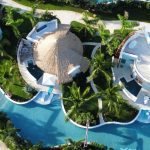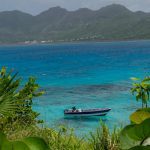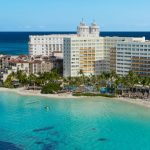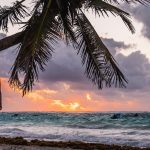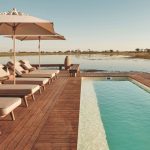Little Canada unveils new exhibit, Little North
Photos by Calm Elliot
Toronto’s Little Canada is eager to provide Canadians who haven’t been to the Yukon, the Northwest Territories or Nunavut with some northern exposure.
The four-year-old attraction, which features miniature replications of different regions of this country, unveiled its newest exhibit in mid-October, Little North, a showcase for this country’s 3 northern territories, with Little Canada founder Jean-Louis Brenninkmeijer predicting it will prompt more Canadians to make the journey North of 60.
Those visiting 600-square-foot Little North – which uses an image of an Inukshuk for the i in Little in Little North signage – will see recreations of such northern communities as Dawson City, Whitehorse and Yellowknife, with the recreated Dawson City seeing reminders of its false-front buildings and the sternwheeler S.S. Keno. There’s also a written tribute to the Sourtoe Cocktail, the famed local libation that includes a mummified human toe.
Structures in the Whitehorse recreation include the White Pass & Yukon train station, while the Northwest Territories display includes a pingo, and an icebreaker can be seen among dramatic Arctic scenery in the Nunavut display.
Visitors will learn about such landmark Northern historical developments as the Klondike Gold Rush and the Franklin Expedition.
Brenninkmeijer – who has visited Whitehorse to see the Northern Lights – predicted that Little North will generate interest among Southerners in vacationing in the North.
“A lot of people say, ‘Oh, we should go there,'” he said of visitors enamored with a particular exhibit in his popular Toronto attraction.
Little Canada president Brad Ford told those on hand that Little North “brings the stories of Northern communities, cultures and landscapes into the heart of downtown Toronto.”
Ford suggested the lightly populated North often gets overlooked by those in the South.
The Little North opening began with Nunavut native Alexandra Anaviapik and Muckpaloo Ipeelie of the Urban Inuit Identity Project giving a demonstration of Inuit throat singing, followed by guests being invited to tour Little North, with the North the eighth featured Little Canada destination. Four more exhibits are planned.
The evening had a poignant side, with Ipeelie telling of government-forced relocations of her people.
But she was thankful her ancestral home has been given the Southern platform, stating it is “incredible…our lands have representation here,” and praised the “great job” Little Canada did with Little North.
Brenninkmeijer said Little Canada pays particular attention to Indigenous stories.
The room housing Little North is kept cooler than the rest of Little Canada, a nod to Arctic and sub-Arctic weather.
Lighting in the room continually switches from bright — recalling summertime midnight sun — to dim, enabling Little North to provide a Northern Lights-like effect for visitors.
The opening of Little North was actually delayed for over a year, enabling its creators to receive added input from Northerners.
Brenninkmeijer recognized that most Canadians will never have the opportunity to see this vast land in its entirety.
“Telling these stories through our intricate and detailed miniature models invites our guests to in turn to tell their stories, evoking a sense of wonder and curiosity about Canada, supported by our talented guest experience guides and storytellers who made our guests feel welcomed, cared for and connected to Canada,” he said.
Ford joined him in suggesting that Little North will serve Northern tourism well.
“I think it will spark interest (in visiting),” he stated.


